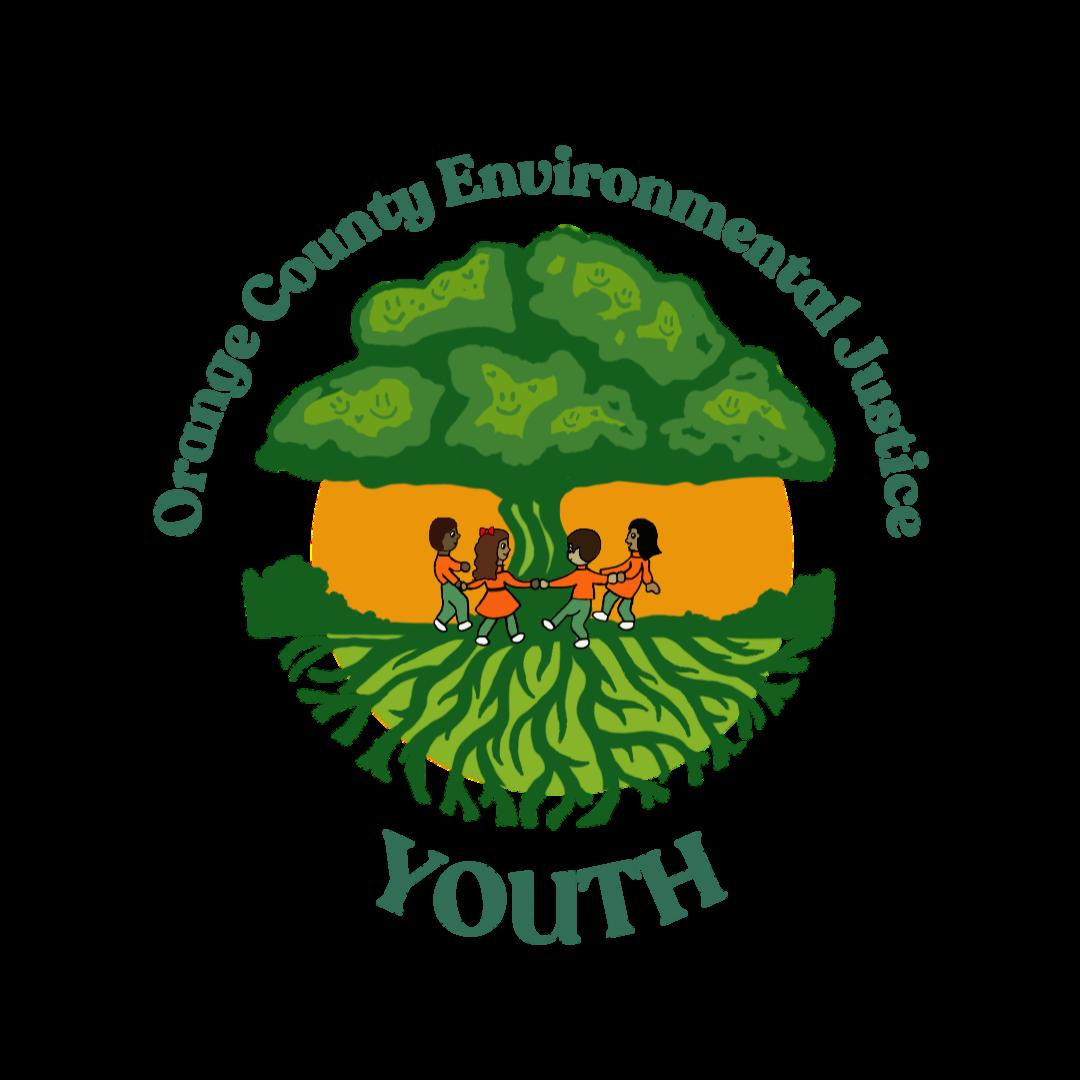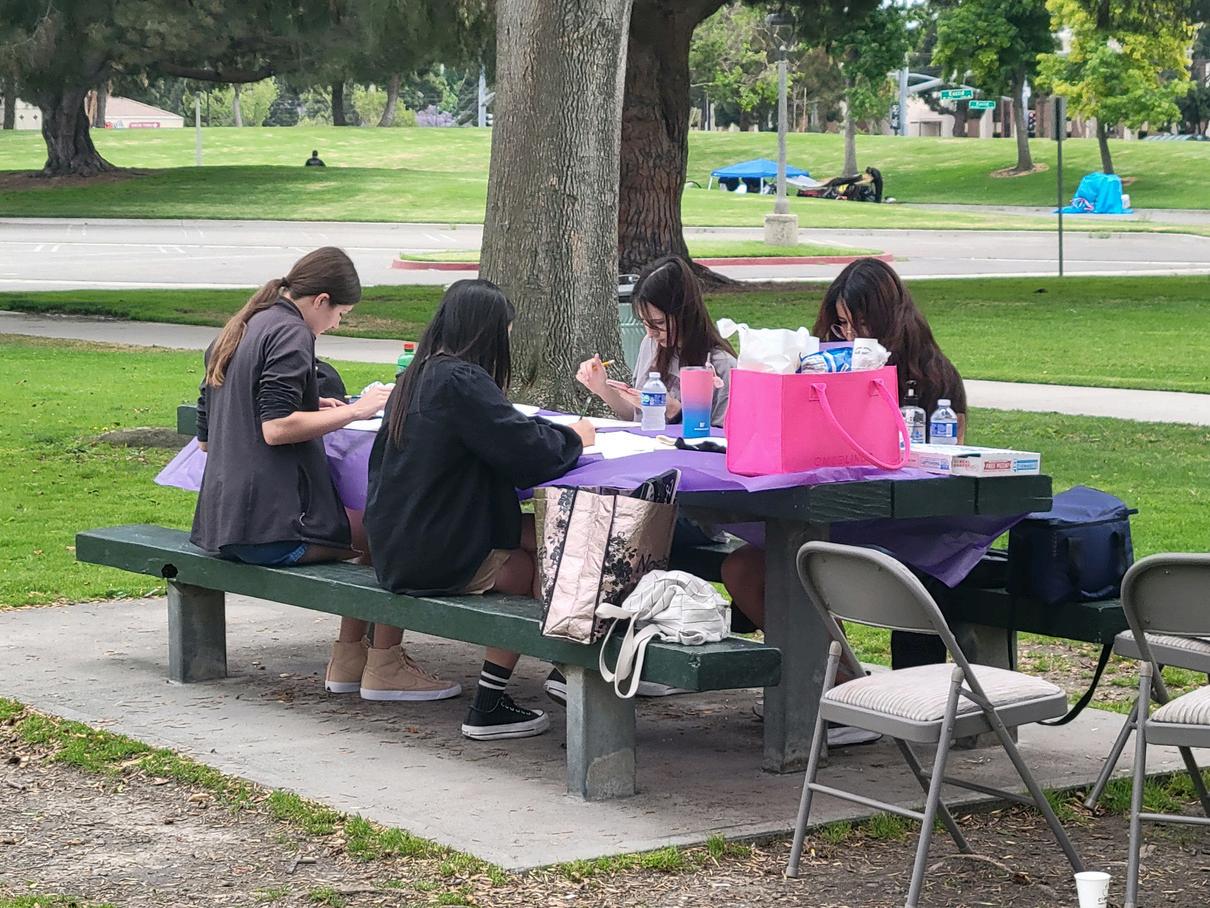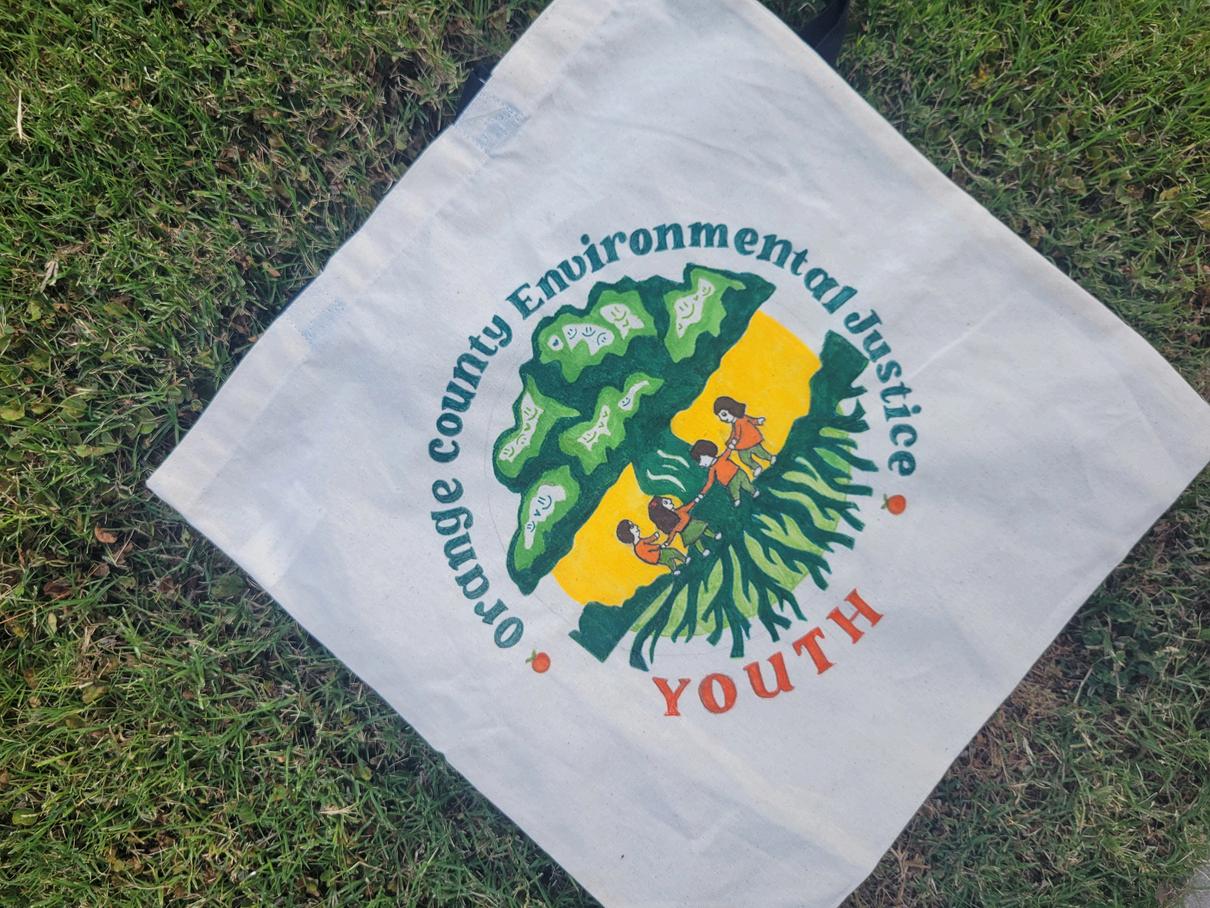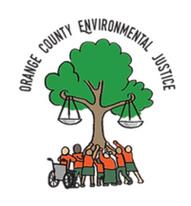YOUTH
2024 ISSUE 2


ISSUESPOTLIGHT
PLO-NO! - Santa Ana says NO to Soil Lead Pollution
Jorge Figueroa
Santa Ana, California is one of the many cities nationwide with soil lead contamination and Environmental Justice issues. Nevertheless, the PLONO! campaign in Orange County work to secure a better future for the city. The PLO-NO campaign is a collaboration by organizations such as OCEJ, UCI, Jovenes Cultivando Cambio, and local journalists to research lead contamination in the city and to mobilize community awareness and action. Since its inception in 2018, the campaign has proved integral to not only unearthing the origins of lead contamination, but the possible risks it poses to Santa Ana communities and youth.
Soil Lead contamination in Santa Ana is an issue with strong historical ties to leaded gasoline and paint. Their prevalent use in the first half of the 20th century has resulted in elevated levels of lead in the soil of many Santa Ana neighborhoods. UCI research uncovers that the levels of lead in Santa Ana’s low income and BIPOC communities often held lead soils levels exceeding those
deemed safe by the California Office of Environmental Health and Hazard Assessment. High lead levels pose a continued threat to Santa Ana residents and youth, who experience developmental and psychological issues .
Through the PLO-NO campaign, OCEJ continues to inform Santa Ana communities about the dangers of soil lead, and a possible solution is underway. OCEJ has recently begun to use bioremediation, or the use of native plants and fungi to sustainably absorb lead from the soil, as a method to resolve the lead crisis.
Want to learn more or see how you can participate. Visit OCEJ.org and follow @ocenvironmentaljustice on Instagram to stay up to date with the PLO-No campaign. --------------------------------------------------
Sources:
“¡Plo-No! Santa Ana.” PLO-NO! Santa Ana, Orange County Environmental Justice, www.ocej.org/plonosantana.
Accessed 30 June 2024.
“June General Meeting - OCEJ Youth Committee.” Youtube, Orange County Environmental Justice, 7 June 2024, https://www.youtube.com/watch?v=xipmF7mG8dY. Accessed 30 June 2024.
WHAT IS ENVIRONMENTAL RACISM?
| Maya Bowen
The phrase environmental racism was coined by civil rights leader Dr. Benjamin F. Chavis Jr., who defined the term as the intentional placement of pollution and waste facilities in communities that are mainly populated by people of color, migrants or low income workers. Hundreds of studies have confirmed that these communities are disproportionately exposed to fumes, toxins, and other pollutants from hazardous facilities located in their community. As a result, these demographics face an increased risk of serious health problems like cancer and respiratory issues. Civil rights leaders have led various marches and protests against this injustice, however changes only started occurring in the late 20th century, with scientists and studies finally investigating the issue. Moving on, environmental racism is classified as a form of systemic racism.

This is because politics and practices have always favored white communities over non white and low income areas. While neither demographic wants hazardous waste in their communities, richer, white areas are more successful in preventing and bringing to light these buildings, while lower income areas often aren't able to garner a response to the issues or fund a rebuttal or lawyer to debate the problem. Another reason why environmental racism formed is that polluting industries want low cost land, which is often where these minorities reside.
Minorities rights to healthy living spaces were further squandered by the U.S. Environmental Protection Agency (EPA), which has a welldocumented history of favoring white communities. White communities are also at an advantage to have their concerns heard and communities protected since 90 percent of Congress is white, and 96 percent of U.S. Governors are white. In addition, the top-10 richest Americans are also white. This further adds to the systemic racism since white people have been prioritized in law making since the founding of the U.S. with the majority of laws and money in the hands of majority white hands, systemic issues like environmental racism are able to happen easily and without much pushback in courts. What cannot be said is that minorities are not trying to fix the issue. Many protests, marches, and propositions have occurred, but often marginalized communities have issues legally fighting laws that disproportionately affect them as they may not have access, influence or understanding of the problem.




Algalita X OCEJ Youth
Webinar Recap
| Maya Bowen
This month, OCEJ youth and Algalita, an environmental nonprofit that started the movement to end plastic pollution, held an online webinar to discuss ecofriendly living, which focused on how to make big changes in plastic pollution as well as what the individual could do. Some of Algailtas achievements include being the first organization to develop ocean plastic monitoring protocols, the first to host international youth summits on the issues, and the first to inspire state-level plastic pollution legislation,which alignes greatly with OCEJ youth’s goal of shedding light on local environmental injustices and sustainability issues while involving teens, regardless of race, national origin, gender or sexuality. OCEJ invited the educational director of Algalita, Anika Ballent, to speak on these topics. Some takeaways from the webinar are that plastics are problematic, since they are made from fossil fuels, do not biodegrade and instead become micro plastics, and are toxic for humans and the environment. Anika Ballent suggested that sustainable entrepreneurship is a huge part of moving towards being more eco friendly. Since 40% of all plastics, excluding all textiles, are made into packaging, a sustainable eunterpernuership’s goal would be to lower, or get rid of this type of plastic altogether. Different packaging would almost half plastic production and consumption if we disregard textiles.

“Every resource we use has an impact on the environment”
- Anika Ballent
Anika’s quote means the issue isn't just plastics, textiles or packaging, it's how we reduce our use of materials and how we make eco-friendly, lowimpact alternatives costeffective and equitable.




BONDING EVENT OCEJ Youth




6 . 08 . 2024


Superfund Sites of Orange County
Penelope Morris
In 1980, after extreme pollution at sites such as Love Canal and Valley of the Drums attracted national concern, Congress established the Comprehensive Environmental Response, Compensation, and Liability Act (CERCLA)—informally dubbed Superfund. Sites designated with Superfund status receive funding from Congress for remediation and removal in a process overseen by the Environmental Protection Agency (EPA). When possible, polluting parties are also held responsible and required to pay for cleanup through the Superfund program.

Many Superfund sites are located in densely populated regions, posing serious risks to the health of both the natural environment and human population. Our county is no exception. Today, there are three Superfund sites in Orange County in active remediation. A fourth Superfund site, Ralph Gray Trucking Co., was delisted in 2004 after comprehensive cleanup efforts.
McCollSite
Fullerton
From 1942-1946, the McColl site, named for the McColl-Frontenac Oil Company, served as the disposal site for petroleum refinery waste. Approximately 72,600 cubic yards of waste from a nearby refinery were dumped into 12 unlined pits (sumps) during this period, which were later covered with drilling mud and natural fill materials in the 1950s and 60s. In 1982, after the construction of the Los Coyotes golf course and several residences on the land, the area was listed on the Superfund National Priorities List due to odor and health complaints. Not surprisingly, investigations found that a number of contaminants, such as arsenic, methylnaphthalene, and sulfur dioxide had affected groundwater and air health. In 1998, the EPA completed construction of a cap and slurry wall around the sumps; monitoring activities are ongoing, with five-year reviews being conducted regularly in the time since.

OrangeCountyNorthBasin
Anaheim, Fullerton, Placentia, Buena Park
▷ Great Park, located in Irvine, sits atop what once was part of the El Toro Marine Corps Air Station and Superfund site. Remediation efforts have allowed the land to be revamped to accommodate the 500acre recreation complex.
Contamination from industrial pollutants left behind by now-shuttered factories in the area resulted in this six-and-a-half-square mile region’s placement on the National Priorities List in September 2020. Prior to its Superfund listing, the leaching of volatile organic compounds (VOCs) into groundwater aquifers had led five water supply wells to be taken out of service. In order to prevent further health and environmental risk, the EPA and Orange County Water District (OCWD) have installed 25 additional monitoring wells as well as several extraction wells. Currently, remediation efforts within the facilities are overseen by the California Department of Toxic Substances control and Santa Ana Regional Water Quality Control.
ElToroMarineCorpsAirStation
El Toro
Built in 1942, the 4,700 acre El Toro Marine Corps Air Station once existed as the primary jet fighter facility for the Fleet Marine Forces on the West Coast. Though the station officially closed in 1999, groundwater in the area continues to be contaminated with toxic substances such as trichloroethylene, or TCE (a degreasing and metal cleaning solvent which has been linked to cancer and organ damage), due to a lack of environmental regulations during its operation. Other contaminants such as leaded fuel, battery acids, and polychlorinated biphenyls (PCBs) were identified at the site. In 2014, over 1,900 acres were removed from the National Priorities List following cleanup efforts paid for by the U.S. Navy; this land was then developed into Irvine’s Great Park. Though this marked a milestone for remediation and recovery for the site, the recent fire that broke out in one of the former base’s hangars this November has reignited public concern for the health of the community.
Nonprofit sues U.S. Forest Service over bottled water operations in the San Bernardino National Forest
Penelope Morris
Nonprofit group Save Our Forest Assn. filed a lawsuit in federal court against the U.S. Forest Service last week, alleging that the Service violated several federal laws by permitting the bottled water company BlueTriton Brands to extract water from the San Bernardino National Forest. Investigations led by state water regulators last year concluded that BlueTriton, which sells water under the Arrowhead label, had unlawfully diverted water from springs that lie on public lands. Members of the group argue that this extraction has reduced groundwater flow and caused interruptions in the local watershed, contributing to public water deficits and environmental degradation.

Currently, BlueTriton holds a federal “special use “ permit that allows them to siphon water from the San Bernardino National Forest. The company pays an annual land fee of $2,500 to the Forest Service, but has not been required to pay for the water. This permit, which was renewed in 2018, has been criticized by Save Our Forest Assn. as a violation of multiple environmental laws, such as the Federal Lands Policy Management Act and the National Environmental Policy Act.
In suing the Forest Service, Save Our Forest Assn. also urges the court to nullify the permit and remove the water diversion structures, restoring the area to its natural state and allowing for further environmental review. As of June 28, the suit is ongoing.
About the Authors
The OCEJ newsletter team
Jorge Figueroa(He/Him)
I am a well rounded person who tries to get involved in school as much as possible. My goal is to improve and impact the things which matter most to me, and my dream career is to work on environmental/climate research to create solutions for climate change.

Maya Bowen

People often define me as adventurous, artistic and driven. I love to play sports outside or paint in my free time. My favorite subject in school is science or history, but I love learning in general. The health od our environment is very important to me, which is why I do Lionsheart, Rooted and OCEJ to advocate and make changes that benefit our environment.
Penelope Morris (they/she)
Having grown up in the Pacific Northwest and lived in Orange County since 2019, I have been lucky to interact with a wide variety of social and environmental causes. As part of the OCEJ Youth Committee, my goal is to continue to advocate for underrepresented communities alongside my interest in environmental science.

Cecilia Baltazar
About OCEJ Youth
The OCEJ Youth committee is a youth advocacy group comprising 18 high school students from all over Orange County, working together to spread environmental sustainability across the community. The committee is affiliated with OCEJ, a 501(c)3 multi-cultural, multi-ethnic environmental justice organization.



(@ocejyouth) to learn about local environmental
